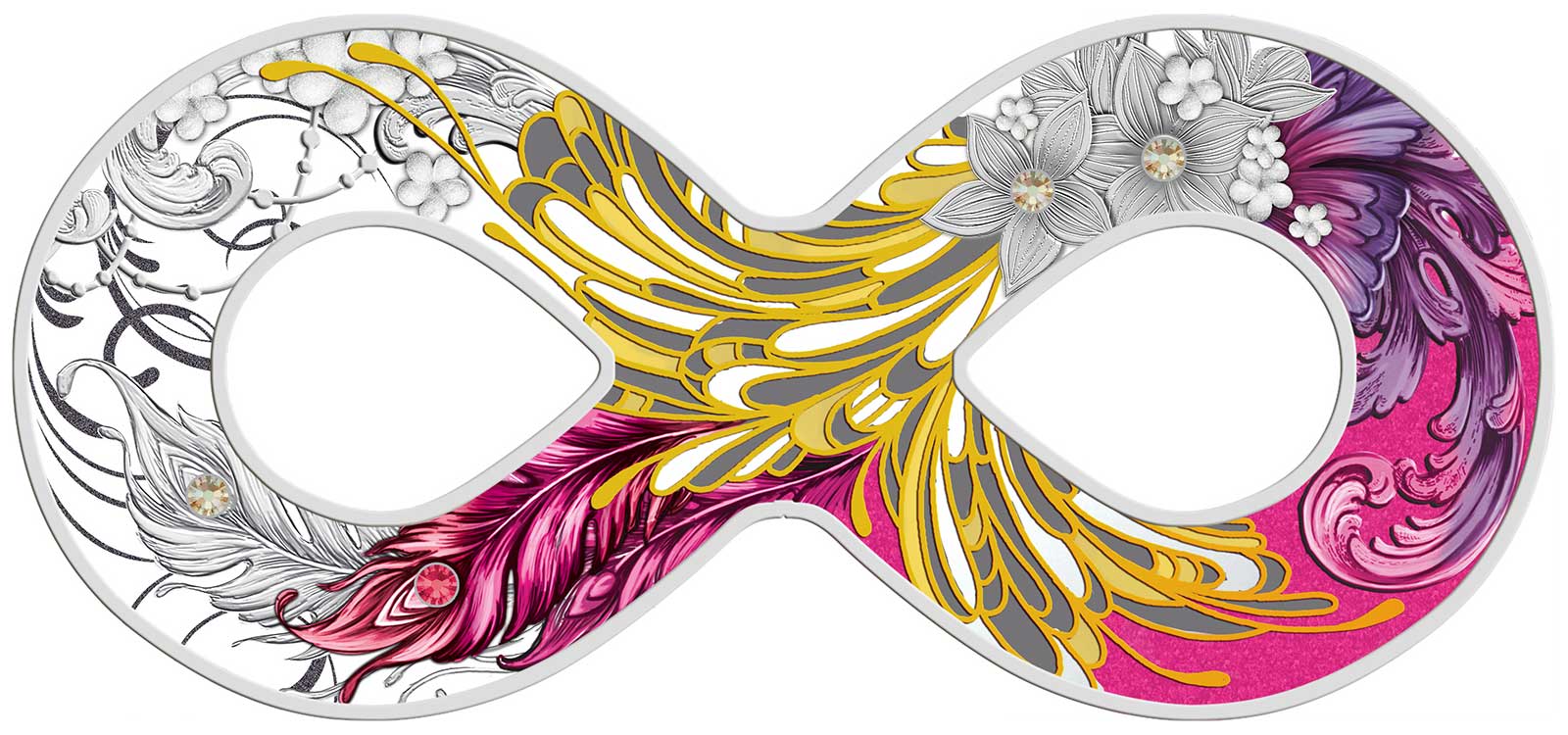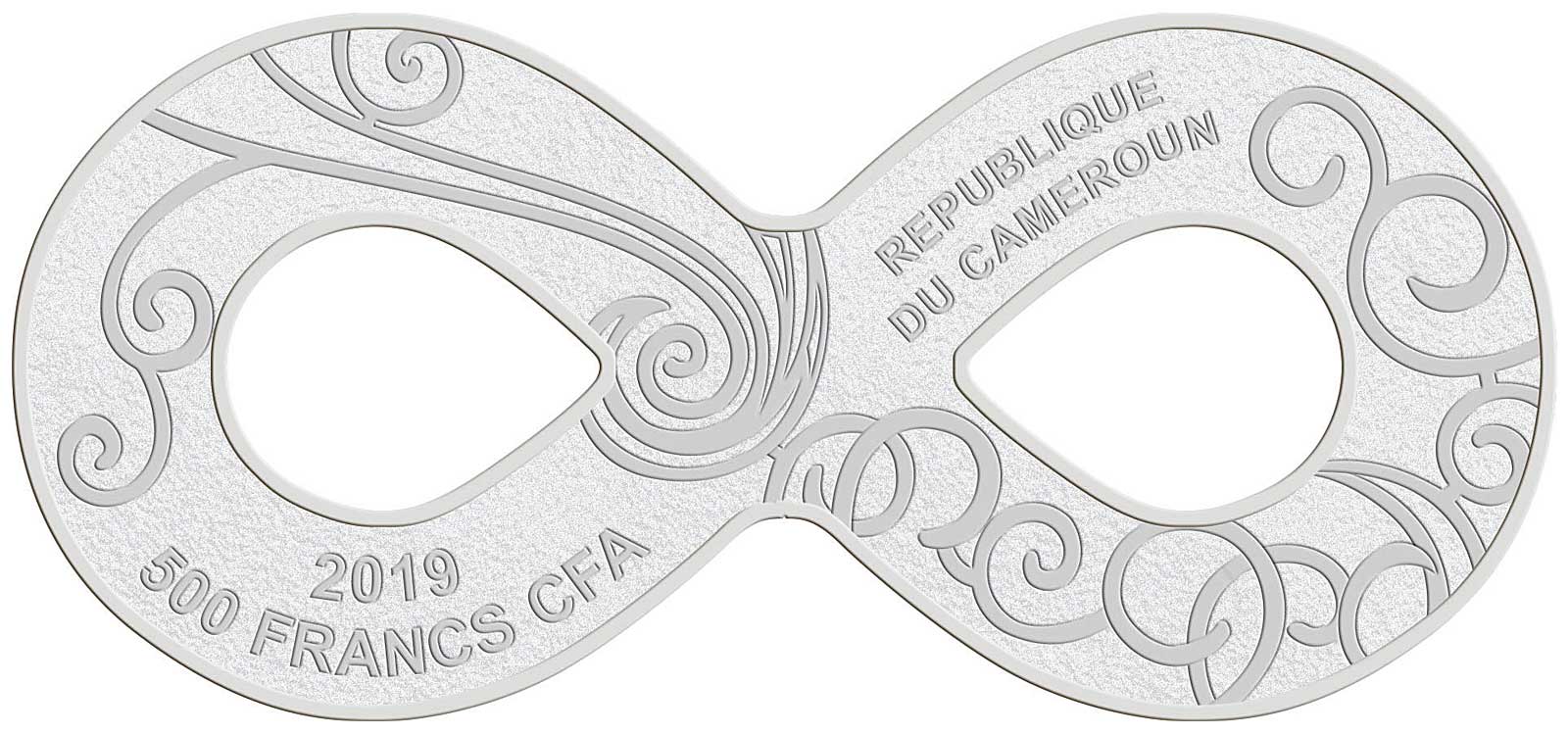The Carnival of Venice inspires an unusual new silver coin from Cameroon
Purveyors of all kind of weird and extreme modern coins, from quite stunning mythology coins, to truly dimensional ones, the Mint of Poland does also issue straightforward, flat and round commemorative coins. This isn’t one of them. It’s flat. It’s round(ish). It isn’t what you would call a traditional shape, however. It is a clever realisation of a subject in numismatic form.
The Carnival of Venice is an annual event full of vibrant colour that first started way back in the twelfth century. One of the most visible elements of the carnival are the plethora of masks worn by revellers. There are several types, each loosely linked with occupations. The Bauta covers the whole face, the Colombina just the eye area, and the striking Medico Della Peste (The Plague Doctor) is a haunting mask with a large birds beak style. There are numerous others, but for the coin, the Mint of Poland has kept it relatively simple and stuck with the Colombina.
Struck as a figure-8, the coin is designed to ape one of the lightweight masks worn by the more casual visitor to the festival. Coloured feathers, gems and flowers are all popular mask design elements and all are present here in one form or another. The gems are actually represented by Swarovski Elements crystals to give it that bit of added bling. Some elegant tracery is struck onto the obverse, but in other respects that face is free of the crystals and colour present on the reverse.
A fraction over ½oz in weight, this proof-finished coin reaches out to 40mm in width, no doubt aided by the ‘eyeholes’ in it. Presented in a latex-skin ‘floating frame’ with a themed insert that incorporates the certificate of authenticity, it’s available to order now and will start to ship around the end of May. Price seems to be around €80.00.
THE CARNIVAL OF VENICE
The Carnival of Venice is an annual festival held in Venice, Italy. The Carnival ends with the Christian celebration of Lent, forty days before Easter, on Shrove Tuesday (Martedì Grasso or Mardi Gras), the day before Ash Wednesday.
It’s said that the Carnival of Venice was started from a victory of the Venice Republic against the Patriarch of Aquileia, Ulrico di Treven in the year 1162. In the honour of this victory, the people started to dance and gather in San Marco Square. Apparently, this festival started on that period and became official in the Renaissance. In the seventeenth century, the baroque carnival was a way to save the prestigious image of Venice in the world. Under the rule of the Holy Roman Emperor and later Emperor of Austria, Francis II, the festival was outlawed entirely in 1797 and the use of masks became strictly forbidden.
It reappeared gradually in the nineteenth century, but only for short periods and above all for private feasts, where it became an occasion for artistic creations. In 1979, the Italian government decided to bring back the history and culture of Venice, and sought to use the traditional Carnival as the centrepiece of its efforts. One of the most important events is the contest for la maschera più bella (“the most beautiful mask”) which is judged by a panel of international costume and fashion designers. The first documented sources mentioning the use of masks in Venice can be found as far back as the 13th century. (Source: Wikipedia)






Leave A Comment